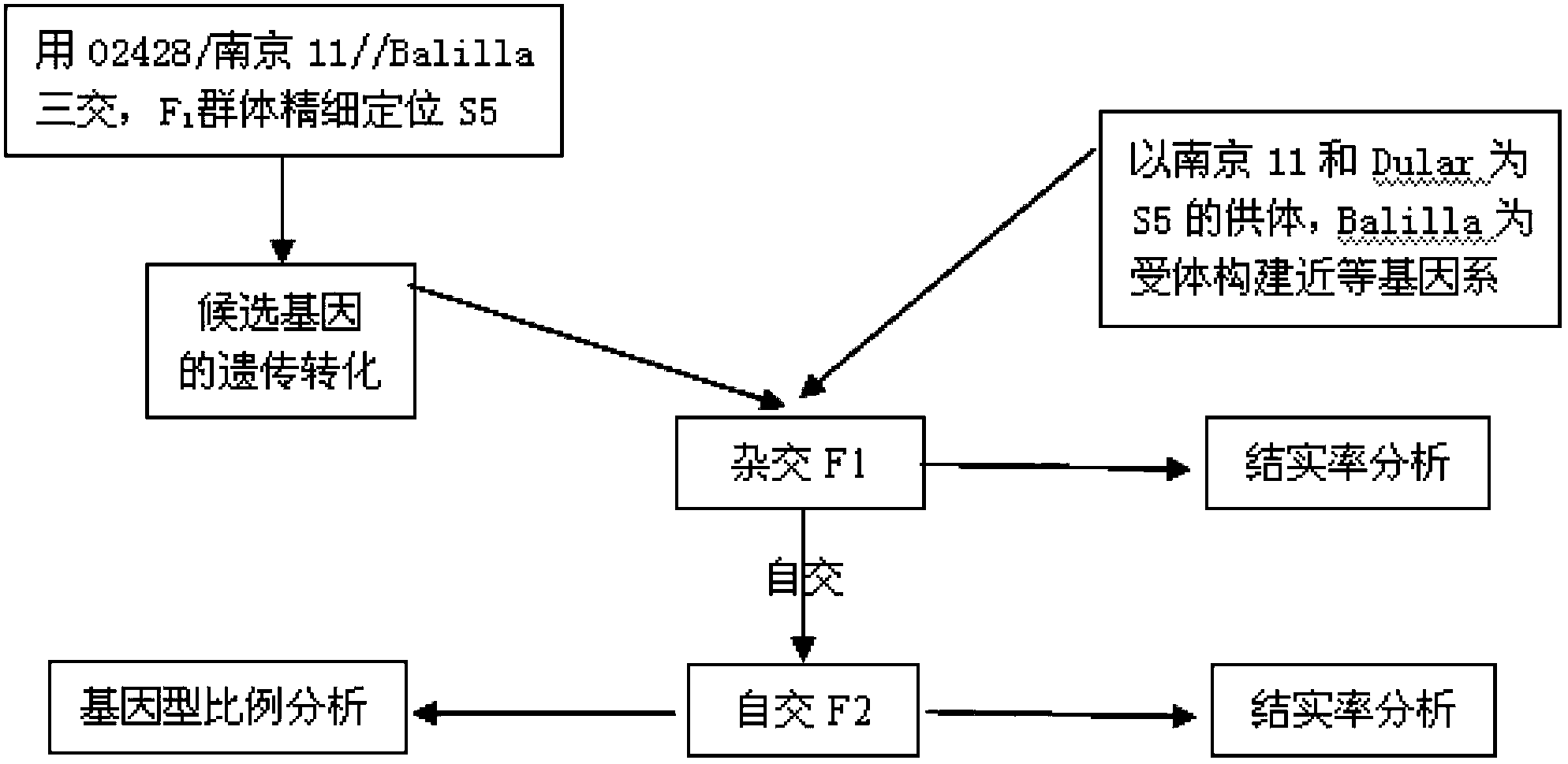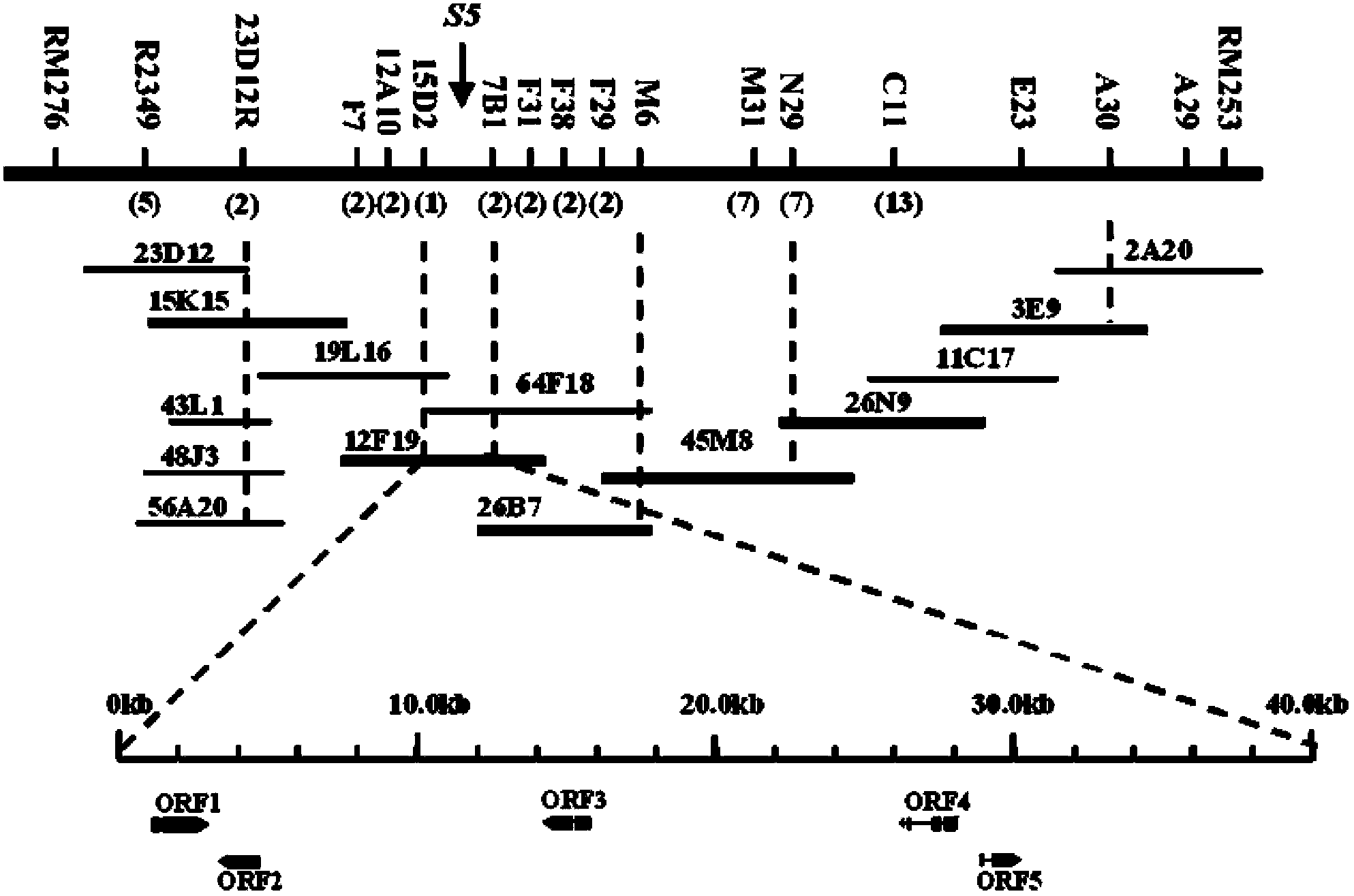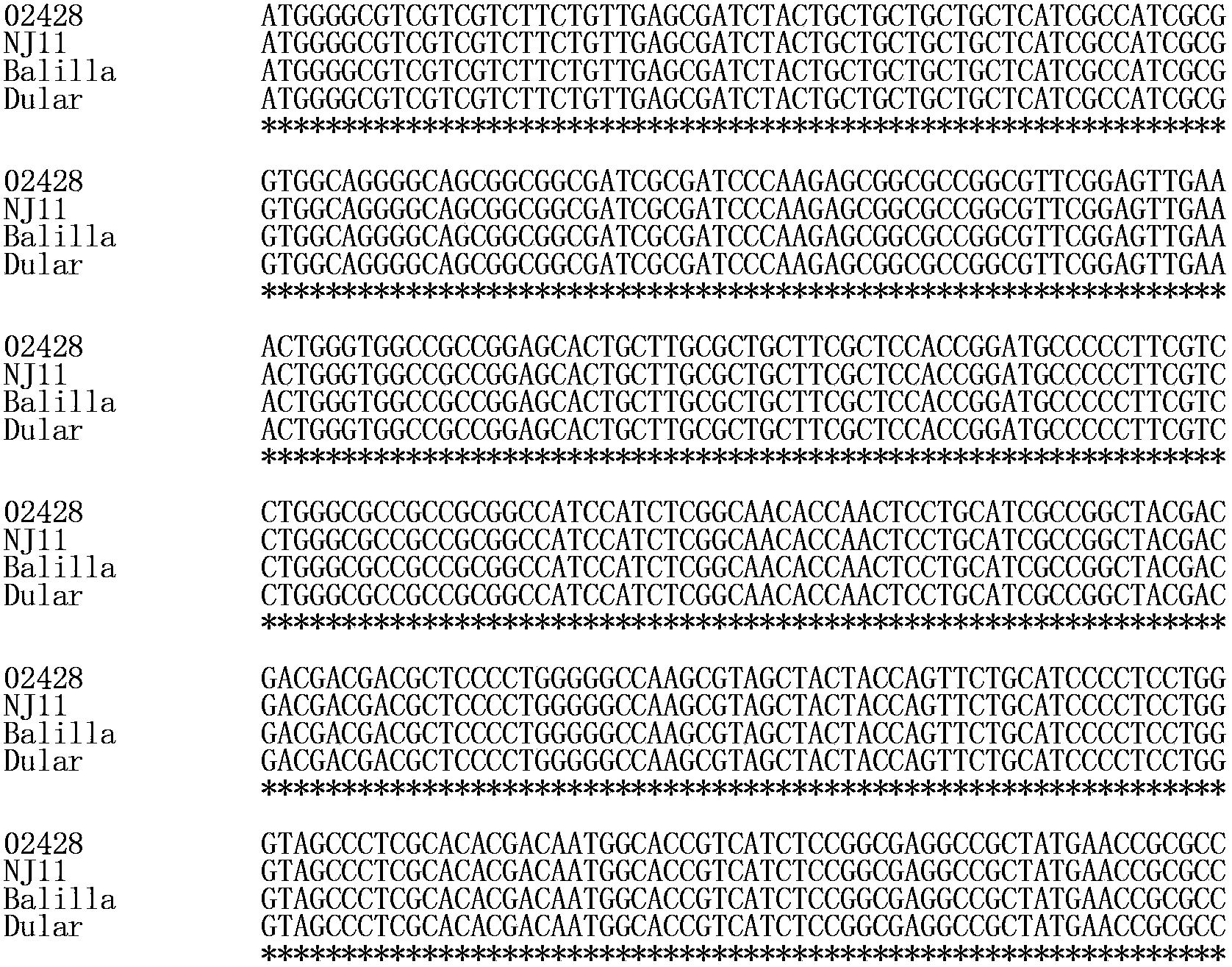Paddy rice hybrid embryo sac fertility gene and use thereof
A technology of hybrid embryos and rice, applied in the field of plant genetic engineering, can solve problems such as negative effects on indica and japonica hybrid fertility, death of japonica female gametes, and reduced hybrid fertility
- Summary
- Abstract
- Description
- Claims
- Application Information
AI Technical Summary
Problems solved by technology
Method used
Image
Examples
Embodiment 1
[0026] Example 1: Isolation and cloning of DNA fragments comprising S5 ORF3 gene segments
[0027] 1. Identification of rice hybrid embryo sac fertility gene ORF3 by map-based cloning
[0028] In the present invention, three parents were used when preparing the mapping population: 02428, Nanjing 11 (Nanjing11) and Balilla. 02428 (from Jiangsu Academy of Agricultural Sciences, China) is a japonica wide-compatibility variety selected by Jiangsu Academy of Agricultural Sciences. Two japonica rice varieties, Yunnan Crab Valley and Shanghai Jibang Rice, were treated with radiation mutagenesis and treated with high light efficiency. The selected materials were crossed and bred from the offspring (Zou Jiangshi et al., Preliminary utilization of the wide-compatibility selection line 02428 in the cross between indica and japonica subspecies. Chinese Agricultural Sciences, 1989, 22: 6-14). Nanjing 11 (abbreviated as NJ11, from Jiangsu Academy of Agricultural Sciences, China) is a medi...
Embodiment 2
[0051] Example 2: Construction of a near-isogenic line at the S5 locus
[0052] In order to detect the effect of transgenic NJ11 ORF3 on seed setting rate in other backgrounds, it is necessary to construct a near-isogenic line at the S5 locus. Use Nanjing 11 (abbreviated as NJ11) and Dular (variety introduced from India by our country. For literature, see: Anonymous, Artificially Induced Mutation of Quantitative Traits of Rice. Northern Rice, 1977, 5:24. Gu Minghong et al., Wide Compatibility Genes of Rice Varieties, etc. Genetic analysis of positional relationship. Chinese Agricultural Sciences, 1993, 1:13-21)) S5 chromosome segment donor, and Balilla as recipient to construct a near-isogenic line. See Example 1 for information on Nanjing 11 and Balilla. The molecular markers used in the construction of near-isogenic lines are shown in Table 3, and the specific operation method can be found in the literature (Wang et al, 2005. Identification and confirmation of three neutral...
Embodiment 3
[0054] Example 3: Effect analysis of NJ11 ORF3 (ORF3+) transgene on seed setting rate of hybrid offspring
[0055] Ballilla (S5-NJ11 / NJ11)×Balilla NJ11 ORF3 Analysis of seed setting rate of hybrid offspring (Table 4). Balilla(S5-NJ11 / NJ11) means that NJ11 is a near-isogenic line in which NJ11 is the donor of the S5 segment, and Balilla is the recipient, and is homozygous for NJ11 in the S5 segment. A near-isogenic line that is heterozygous for Balilla / NJ11 at the S5 segment is denoted as Balilla(S5-Balill / NJ11), and so on. Cross F1 has transgene negative / positive segregation. The average seed setting rate of the negative F1 plant Balilla (S5-Balilla / NJ11) was 50.3±0.6; the positive F1 plant Balilla (S5-Balilla / NJ11) NJ11 ORF3 The average seed setting rate was 71.5±0.6. The difference in seed setting rate between negative and positive F1 plants reached a very significant level (P value of t test was 0.00), indicating that transgenic NJ11 ORF3 had a very significant increase...
PUM
 Login to View More
Login to View More Abstract
Description
Claims
Application Information
 Login to View More
Login to View More - R&D
- Intellectual Property
- Life Sciences
- Materials
- Tech Scout
- Unparalleled Data Quality
- Higher Quality Content
- 60% Fewer Hallucinations
Browse by: Latest US Patents, China's latest patents, Technical Efficacy Thesaurus, Application Domain, Technology Topic, Popular Technical Reports.
© 2025 PatSnap. All rights reserved.Legal|Privacy policy|Modern Slavery Act Transparency Statement|Sitemap|About US| Contact US: help@patsnap.com



